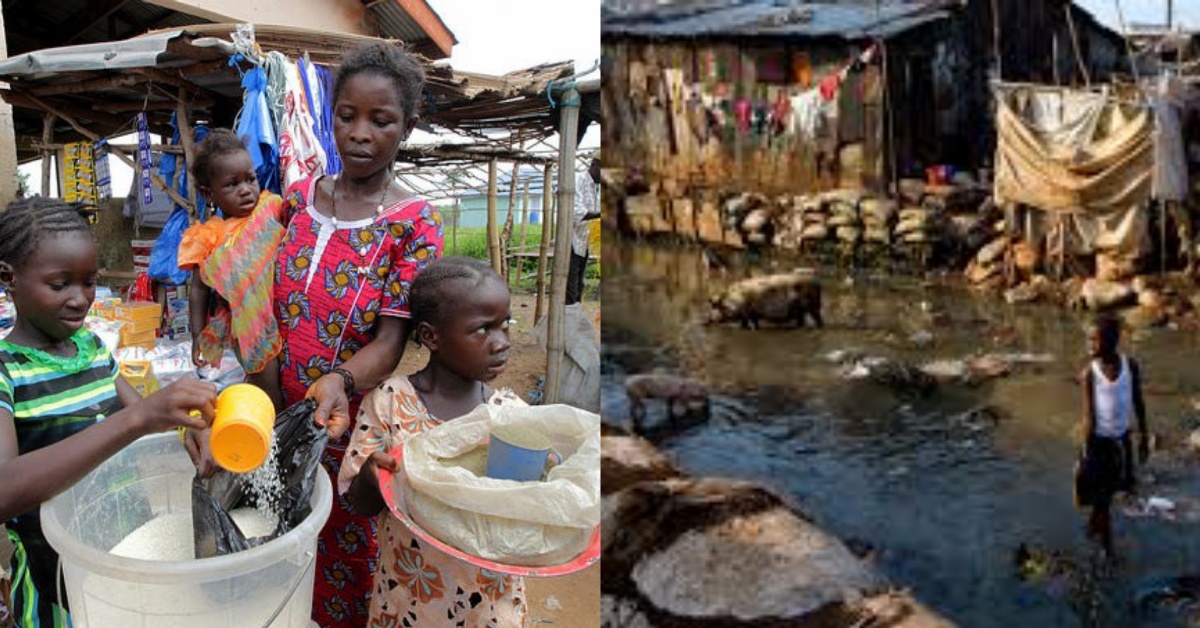Extreme poverty in rural areas rose from 9% to 13%, although it remained unchanged nationally. A new World Bank report that assesses poverty trends, development, and drivers reveal.
The December 2022 publication indicates that “the growth elasticity of poverty fell from 0.9 to 0.7, meaning in the latter period, for every 1% increase in GDP per capita, poverty fell by 0.7%.
Moreover, the increase in mining did not indicate structural transformation since there were little or no spillovers into other parts of the economy. During this period, Sierra Leone’s economy became more dependent on agriculture, a pattern that differs from other developing countries.”
The new poverty assessment for Sierra Leone says the country faces many challenges in improving the welfare of citizens, but that urbanization offers an opportunity to improve living standards and reduce poverty among the population.
“Urbanization presents an opportunity to promote productivity, improve living standards, expand markets efficiently and reduce poverty in Sierra Leone, but only if the right policies are in place to maximize its potential,” the report states.
Abdu Muwonge is the World Bank Country Manager he says education and job creation can go a long way to improving the socioeconomic well-being of the people.
“If education is a barrier towards accessing opportunities, especially in the capital and other urban cities, then increased investments in the sector throughout the country could be a plausible pathway in ensuring that citizens are equipped with the knowledge and skills that make them suitable for the job market, thus improving their socio-economic wellbeing,” he said.
The report indicates that poverty fell by about 6 percentage points between 2011 and 2018 a significant achievement given that iron ore prices crashed in 2016 and the country suffered from an Ebola outbreak. The gains in poverty reduction were achieved exclusively in urban areas. However, the rural population remained impoverished.
Paul Andres Corral Rodas is a Senior Economist at the World Bank and the lead author of the report. He says,
“The increasing concentration of poverty in less economically vibrant areas seems to signify that macroeconomic developments and structural changes in the economy are the first places to start in unpacking the drivers of welfare improvements in Sierra Leone. So, the key message of this report is that, with prudent policies in place, the forces of urbanization can be leveraged to maximize living standards thereby reducing poverty among the populace.”
“In 2020, an estimated 44% of Sierra Leone’s population lived in urban areas. Poverty has been declining more rapidly in urban areas than in rural areas even as urbanization only partially reflects ‘push’ factors (such as lack of services) in rural areas rather than ‘pull’ factors (such as rapid job creation in manufacturing) in urban areas,” the report states.
It also found that poverty reduction has likely stagnated or even reversed during the height of the COVID-19 pandemic as estimates show that GDP contracted by more than 2% in 2020 due to imposed mobility restrictions, which mostly affected the service sector.
According to the report, the “official poverty rate in Sierra Leone in 2018 was 57% of the population. The incidence of poverty varies significantly across the country, ranging from 23% in Greater Freetown 49% in other urban areas, and 74% in rural areas. The geographic dispersion of poverty is wide, with the Northern Province experiencing the highest rate of poverty (77%) and the Greater Freetown area experiencing the lowest rate (23%).”
In the area of recommendations, the report calls for investment in secondary cities, suggesting that these could offer a higher return on investment to the government as an investment can reach a much higher percentage of the poor at a lower cost. This it indicates could also yield considerable poverty reduction as well as economic growth.
It also recommends increased investment in education and skills, which it says will help more Sierra Leoneans access formal opportunities; accessing formal employment in cities means rural Sierra Leoneans will likely have to acquire more education and skills.
In addition to investing in poverty reduction, the report identifies that despite informal jobs being an effective avenue for job creation and poverty reduction, these are not long-term solutions and are unlikely to spur economic transformation. They can serve as short- to medium-term coping strategies in the face of shocks, but formal employment is a viable path toward escaping chronic poverty.
It also acknowledges that a lack of infrastructural amenities such as access to electricity limit job creation and hamper poverty reduction. It also leads to considerable losses to businesses. Therefore, improving access to electricity and other facilities such as water, and sanitation could improve people’s well-being.
Note: The World Bank Group works in every major area of development, providing a wide array of financial products and technical assistance and helping countries share and apply innovative knowledge and solutions to the challenges they face.
Its key focus is ending poverty, boosting prosperity for the poorest people, helping create sustainable economic growth, investing in people, and building resilience to shocks and threats that can roll back decades of progress.



 Post a comment
Post a comment 









